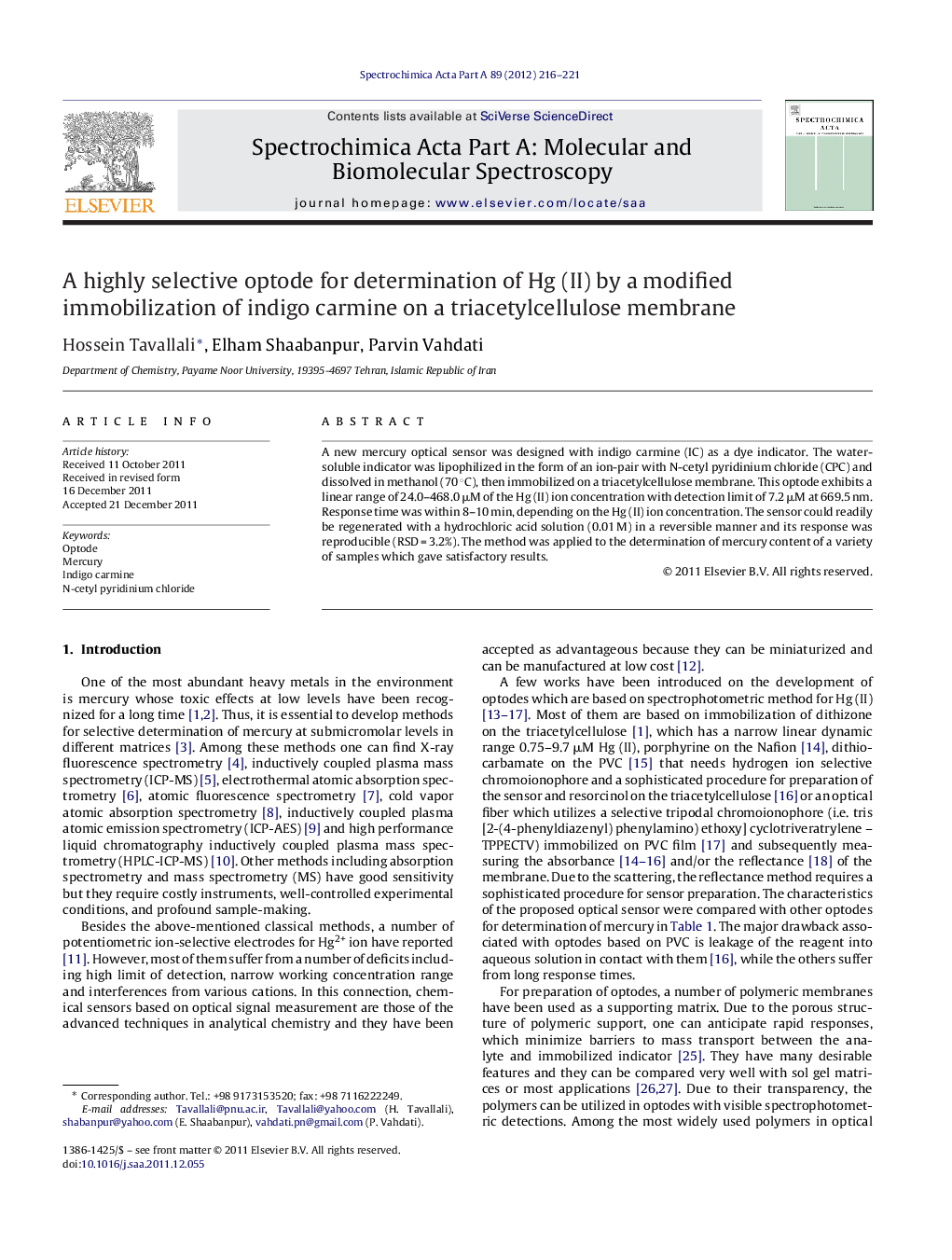| کد مقاله | کد نشریه | سال انتشار | مقاله انگلیسی | نسخه تمام متن |
|---|---|---|---|---|
| 1234670 | 1495279 | 2012 | 6 صفحه PDF | دانلود رایگان |

A new mercury optical sensor was designed with indigo carmine (IC) as a dye indicator. The water-soluble indicator was lipophilized in the form of an ion-pair with N-cetyl pyridinium chloride (CPC) and dissolved in methanol (70 °C), then immobilized on a triacetylcellulose membrane. This optode exhibits a linear range of 24.0–468.0 μM of the Hg (II) ion concentration with detection limit of 7.2 μM at 669.5 nm. Response time was within 8–10 min, depending on the Hg (II) ion concentration. The sensor could readily be regenerated with a hydrochloric acid solution (0.01 M) in a reversible manner and its response was reproducible (RSD = 3.2%). The method was applied to the determination of mercury content of a variety of samples which gave satisfactory results.
The fabrication of novel and highly sensitive mercury sensor based on the interaction between indigo carmine in a lipophilized form and mercury ion is investigated.Figure optionsDownload as PowerPoint slideHighlights
► Indicator immobilization carried out via synthesis of an ion-pair through temperature control.
► Stable membranes with no leakage and long life times concluded.
► The sensor could readily be regenerated.
Journal: Spectrochimica Acta Part A: Molecular and Biomolecular Spectroscopy - Volume 89, April 2012, Pages 216–221